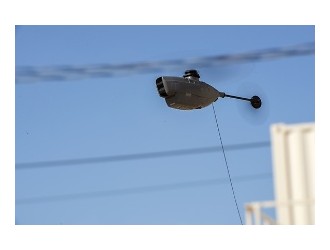
Meanwhile, there was a full array of weaponry shown in front of the Xi’an H-6K bomber, a license-built version of the Tupolev Tu-16, and the Chengdu J-10B fighter. The J-10B variant had not been displayed openly before and is notable for its redesigned, oval-shaped air intake—similar to the U.S. Lockheed Martin F-16—and the placement of electronic warfare fairings on the vertical tail and elsewher on the airframe.
“The Chinese continue a number of programs that seem to overlap, and to the outside observer there would seem to be no small amount of waste in their procurement system,” said a former U.S. DoD official who attended the Zhuhai event. This sentiment was echoed by Russian specialists at the show who told AIN, “The Chinese have in the past had no problem with resources—people, money, facilities, etc.—so they theoretically can afford to have two different companies designing stealthy fighter aircraft, and four different AWACS programs running at the same time.”
The former was a reference to the J-20 versus the J-31, which did not appear this time. The latter was a reference to the Shaanxi Y-8 turboprop that has been equipped with three AESAs produced by China Electronics Technology Corporation (CETC). The fourth system is the KJ-2000 that is installed in a Russian-made Ilyushin Il-76. Of all these AWACS systems, the KJ-500/Y-8 combination was on display for the first time at this year’s show.
The same degree—or more—of duplication is seen in the Chinese air-launched weapons industry. There were several types of missiles with overlapping mission profiles on display at Zhuhai in almost every category: air-to-air, air-to-ground, long-range cruise, etc.
In October 2015, Fu Qianshao, a PLAAF spokesman, told the state-run China Daily: “The fact that our H-6K bombers have performed several long-distance drills far into the Pacific Ocean indicates that the H-6K fleet has become capable of conducting various operations such as long-range precision strikes.” The array of precision-strike weaponrydisplayed in front of the H6-K included the nuclear-capable A/AKD-63 cruise missile, two of which were mounted on the aircraft when it flew into the Zhuhai aerodrome before the show.
The weaponry displayed at Zhuhai “is an impressive demonstration of just how much China has invested in its defense industrial complex,” said a U.S.-based defense analyst who specializes in China’s military. “But without a real export customer for most of this hardware, and without any existential threat to their borders, airspace, and interests, it appears that Beijing is simply building a massive arsenal that is designed to take on—and take out—the U.S. Navy. It shows why the so-called ‘pivot to Asia’ under the outgoing U.S. administration should have had far more substance to it than it actually did.”





